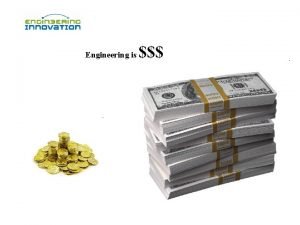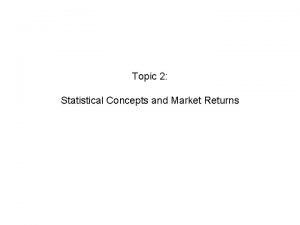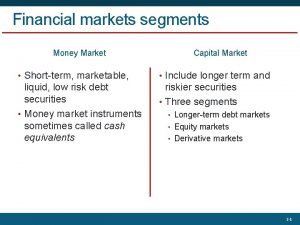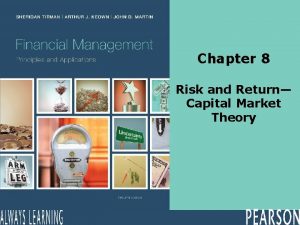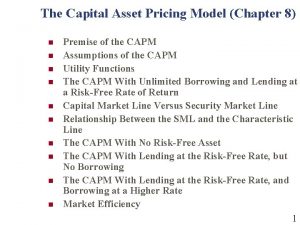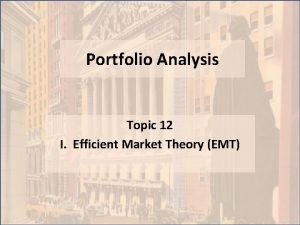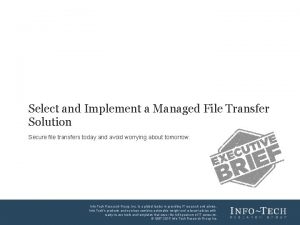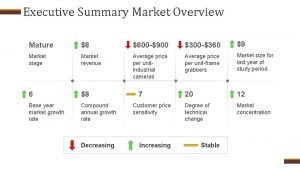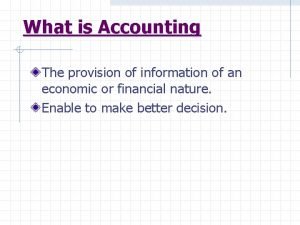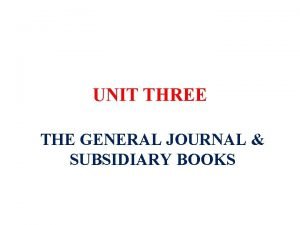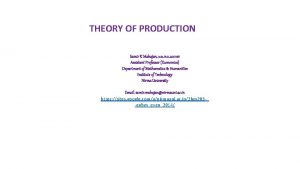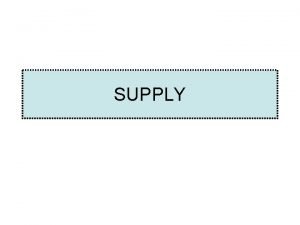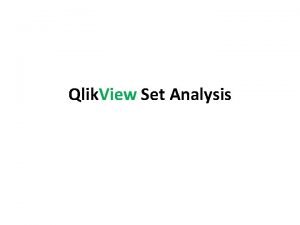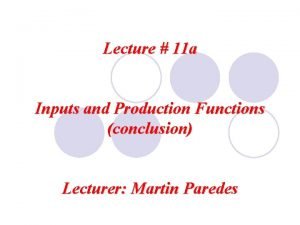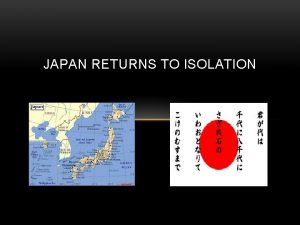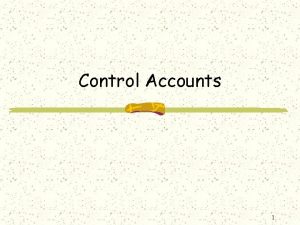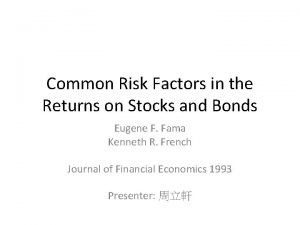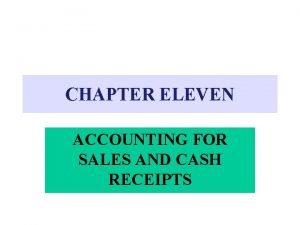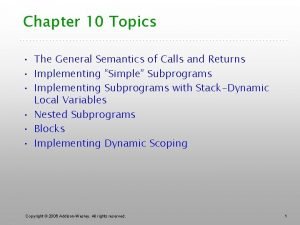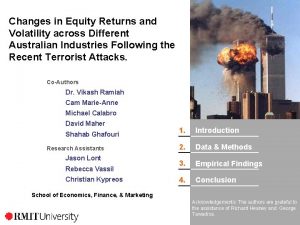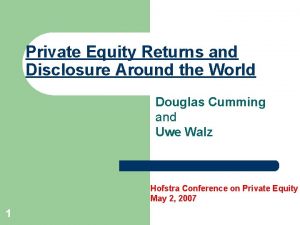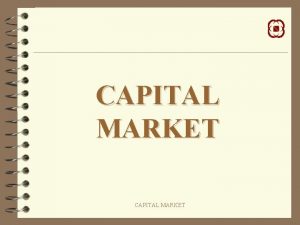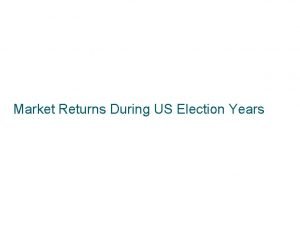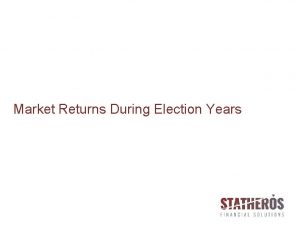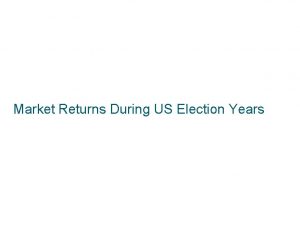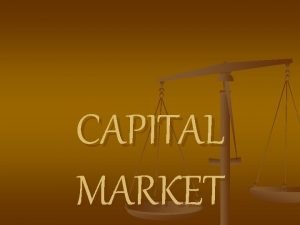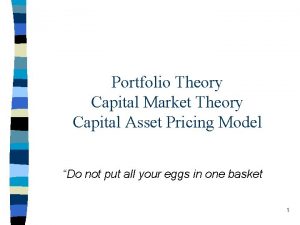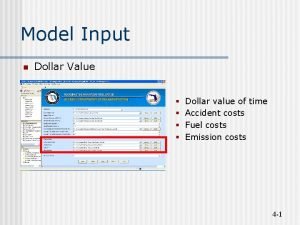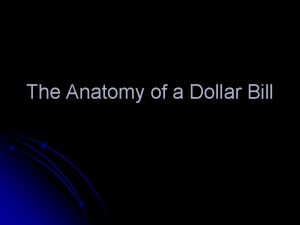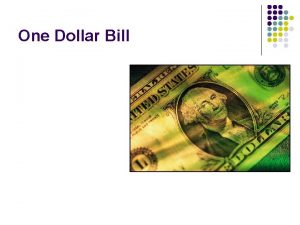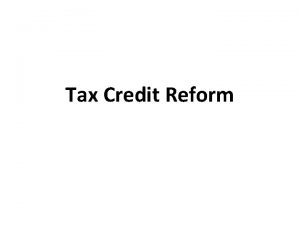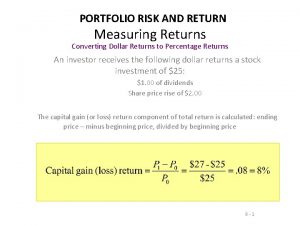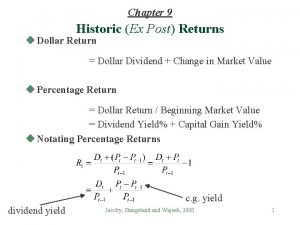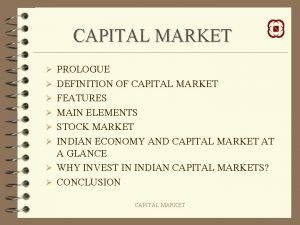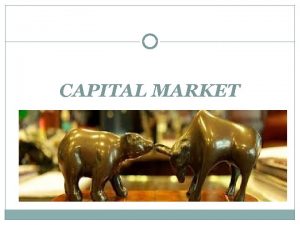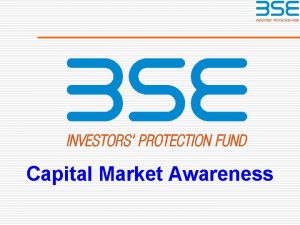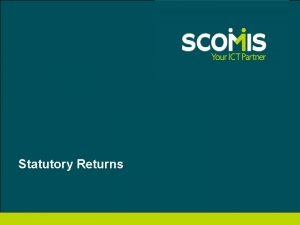An Overview of Capital Market Theory Returns Dollar





































- Slides: 37

An Overview of Capital Market Theory

Returns Dollar Returns the sum of the cash received and the change in value of the asset, in dollars. Time 0 Initial investment Dividends Ending market value 1 • Percentage Returns –the sum of the cash received and the change in value of the asset divided by the original investment.

Returns Dollar Return = Dividend + Change in Market Value dollar return percentage return = beginning market value dividend + change in market value = beginning market value = dividend yield + capital gains yield

Returns: Example Suppose you bought 100 shares of Wal-Mart (WMT) one year ago today at $25. Over the last year, you received $20 in dividends (= 20 cents per share × 100 shares). At the end of the year, the stock sells for $30. How did you do? Quite well. You invested $25 × 100 = $2, 500. At the end of the year, you have stock worth $3, 000 and cash dividends of $20. Your dollar gain was $520 = $20 + ($3, 000 – $2, 500). $520 Your percentage gain for the year is 20. 8% = $2, 500

Returns: Example Dollar Return: $20 $520 gain $3, 000 Time 0 -$2, 500 1 Percentage Return: $520 20. 8% = $2, 500

9. 2 Holding-Period Returns The holding period return is the return that an investor would get when holding an investment over a period of n years, when the return during year i is given as ri:

Holding Period Return: Example Suppose your investment provides the following returns over a four-year period:

Holding Period Return: Example An investor who held this investment would have actually realized an annual return of 9. 58%: So, our investor made 9. 58% on his money for four years, realizing a holding period return of 44. 21%

Holding Period Return: Example Note that the geometric average is not the same thing as the arithmetic average:

Holding Period Returns A famous set of studies dealing with the rates of returns on common stocks, bonds, and Treasury bills was conducted by Roger Ibbotson and Rex Sinquefield. They present year-by-year historical rates of return starting in 1926 for the following five important types of financial instruments in the United States: Large-Company Common Stocks Small-company Common Stocks Long-Term Corporate Bonds Long-Term U. S. Government Bonds U. S. Treasury Bills

The Future Value of an Investment of $1 in 1925 $1, 775. 34 $59. 70 $17. 48 Source: © Stocks, Bonds, Bills, and Inflation 2003 Yearbook™, Ibbotson Associates, Inc. , Chicago (annually updates work by Roger G. Ibbotson and Rex A. Sinquefield). All rights reserved.

Return Statistics The history of capital market returns can be summarized by describing the average return the standard deviation of those returns the frequency distribution of the returns.

Average Stock Returns and Risk-Free Returns The Risk Premium is the additional return (over and above the risk-free rate) resulting from bearing risk. One of the most significant observations of stock market data is this long-run excess of stock return over the riskfree return. The average excess return from large company common stocks for the period 1926 through 1999 was 8. 4% = 12. 2% – 3. 8% The average excess return from small company common stocks for the period 1926 through 1999 was 13. 2% = 16. 9% – 3. 8% The average excess return from long-term corporate bonds for the period 1926 through 1999 was 2. 4% = 6. 2% – 3. 8%

Risk Premiums Rate of return on T-bills is essentially risk-free. Investing in stocks is risky, but there are compensations. The difference between the return on T-bills and stocks is the risk premium for investing in stocks. An old saying on Wall Street is “You can either sleep well or eat well. ”

Expected Return, Variance, and Covariance Consider the following two risky asset world. There is a 1/3 chance of each state of the economy and the only assets are a stock fund a bond fund.

Expected Return, Variance, and Covariance

Expected Return, Variance, and Covariance E (r. S ) = 1 ´( -7%) + 1 ´(12%) + 1 ´(28%) 3 3 3 E (r. S ) =11%

Expected Return, Variance, and Covariance E (r. B ) = 1 ´(17%) + 1 ´( -3%) 3 3 3 E (r. B ) = 7%

Expected Return, Variance, and Covariance (11% - -7%) = 3. 24% 2

Expected Return, Variance, and Covariance (11% -12%) =. 01% 2

Expected Return, Variance, and Covariance 2 (11% 28%) = 2. 89%

Expected Return, Variance, and Covariance 1 2. 05% = (3. 24% + 0. 01% + 2. 89%) 3

Expected Return, Variance, and Covariance 14. 3% = 0. 0205

The Return and Risk for Portfolios Note that stocks have a higher expected return than bonds and higher risk. Let us turn now to the risk-return tradeoff of a portfolio that is 50% invested in bonds and 50% invested in stocks.

The Return and Risk for Portfolios The rate of return on the portfolio is a weighted average of the returns on the stocks and bonds in the portfolio: r. P = w. B r. B + w. S r. S

The Return and Risk for Portfolios The rate of return on the portfolio is a weighted average of the returns on the stocks and bonds in the portfolio: r. P = w. B r. B + w. S r. S 9. 5% = 50% ´(12%) + 50% ´(7%)

The Return and Risk for Portfolios The rate of return on the portfolio is a weighted average of the returns on the stocks and bonds in the portfolio: r. P = w. B r. B + w. S r. S 12. 5% = 50% ´(28%) + 50% ´( -3%)

The Return and Risk for Portfolios The expected rate of return on the portfolio is a weighted average of the expected returns on the securities in the portfolio. E (r. P ) = w. B E (r. B ) + w. S E (r. S ) 9% = 50% ´(11%) + 50% ´(7%)

The Return and Risk for Portfolios The variance of the rate of return on the two risky assets portfolio is 2 2 = + σ (w. B σB ) (w. S σS ) + 2(w. B σB )(w. S σS )ρBS 2 P where BS is the correlation coefficient between the returns on the stock and bond funds.

The Return and Risk for Portfolios Observe the decrease in risk that diversification offers. An equally weighted portfolio (50% in stocks and 50% in bonds) has less risk than stocks or bonds held in isolation.

return Two-Security Portfolios with Various Correlations 100% stocks = -1. 0 100% bonds = 1. 0 = 0. 2 Relationship depends on correlation coefficient -1. 0 < < +1. 0 If = +1. 0, no risk reduction is possible If = – 1. 0, complete risk reduction is possible

return 10. 5 The Efficient Set for Many Securities r nt cie i f f e tie n o r f minimum variance portfolio Individual Assets P The section of the opportunity set above the minimum variance portfolio is the efficient frontier.

return 10. 7 Riskless Borrowing and Lending CM L efficient frontier rf P With a risk-free asset available and the efficient frontier identified, we choose the capital allocation line with the steepest slope

Definition of Risk When Investors Hold the Market Portfolio Researchers have shown that the best measure of the risk of a security in a large portfolio is the beta (b)of the security. Beta measures the responsiveness of a security to movements in the market portfolio. bi = Cov ( Ri , RM ) s ( RM ) 2

Estimates of b for Selected Stocks Stock Bank of America Borland International Travelers, Inc. Beta 1. 55 2. 35 1. 65 Du Pont Kimberly-Clark Corp. Microsoft 1. 00 0. 90 1. 05 Green Mountain Power Homestake Mining Oracle, Inc. 0. 55 0. 20 0. 49

The Formula for Beta bi = Cov ( Ri , RM ) s 2 ( RM ) Clearly, your estimate of beta will depend upon your choice of a proxy for the market portfolio.

10. 9 Relationship between Risk and Expected Return (CAPM) Expected Return on the Market: Expected return on an individual security: Market Risk Premium This applies to individual securities held within welldiversified portfolios.
 A dollar today is worth more than a dollar tomorrow
A dollar today is worth more than a dollar tomorrow Capital allocation line vs capital market line
Capital allocation line vs capital market line Statistical concepts and market returns
Statistical concepts and market returns Money market
Money market Importance of money market
Importance of money market Capital market theory
Capital market theory Capital market line formula
Capital market line formula Borrowing portfolio
Borrowing portfolio Leader challenger
Leader challenger Define market segmentation targeting and positioning
Define market segmentation targeting and positioning Market overview managed file transfer solutions
Market overview managed file transfer solutions Forrester real time interaction management
Forrester real time interaction management Canadian tea market overview
Canadian tea market overview Market overview slide
Market overview slide Gross operating cycle
Gross operating cycle Source of capital reserve
Source of capital reserve Multinational capital structure
Multinational capital structure Difference between capital reserve and reserve capital
Difference between capital reserve and reserve capital Regulatory capital vs economic capital
Regulatory capital vs economic capital Regulatory capital vs economic capital
Regulatory capital vs economic capital Constant capital and variable capital
Constant capital and variable capital Multinational cost of capital and capital structure
Multinational cost of capital and capital structure What is provision of information
What is provision of information Types of subsidiary books
Types of subsidiary books Law of returns to scale
Law of returns to scale Stage of negative returns
Stage of negative returns The function sum( region= sales) returns
The function sum( region= sales) returns Production function conclusion
Production function conclusion Japan returns to isolation
Japan returns to isolation Section 3 japan
Section 3 japan Chapter 19 section 3 japan returns to isolation
Chapter 19 section 3 japan returns to isolation Mmap returns ffff
Mmap returns ffff Minority balance in control account
Minority balance in control account Common risk factors in the returns on stocks and bonds
Common risk factors in the returns on stocks and bonds Four column ledger example
Four column ledger example General semantics of calls and returns
General semantics of calls and returns How to calculate abnormal returns
How to calculate abnormal returns Private equity returns and disclosure around the world
Private equity returns and disclosure around the world
